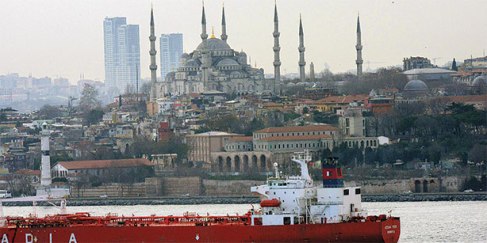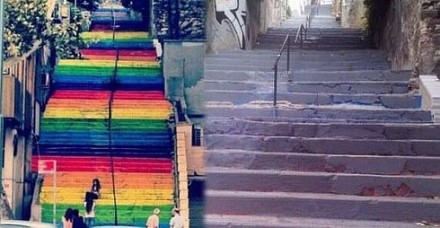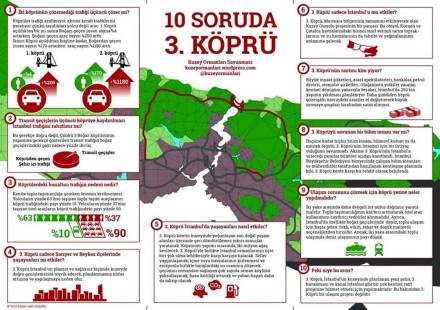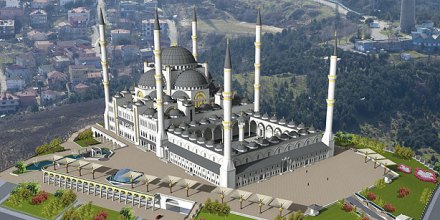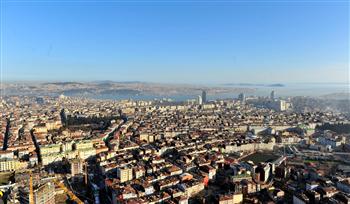Academics who convened last week at a panel discussion titled “What is Happening on the Historical Peninsula” at Mimar Sinan University of Fine Arts (MSGSÜ) were in almost unanimous agreement in the belief that the historical peninsula is in danger of being wiped off the face of the earth.
Aykut Köksal, an instructor at MSGSÜ, estimated that the region will become unrecognizable given the current pace of changes. For him, the strongest intrusion in the region’s rich history is in Yenikapı, an area of the historical peninsula. The Marmaray tunnel, which connects the two sides of the Bosporus via channels for railed and wheeled vehicles, will render the region a significant center of transportation, leaving it exposed to the severe threat of also becoming more densely populated with residents, Köksal said.
Marmaray, which opened on Oct. 29, 2013, sees 40 times more people crossing the Bosporus than the Bosporus Bridge. Similarly, with the launch of the tunnel for vehicles in a few years, the region — and especially Yenikapı on the southern side of the peninsula — will not be able to handle the tide of traffic, experts warn.
Jean-François Perouse, director of the French Institute of Anatolian Studies (IFEA), says the historical peninsula has become an attractive residential center because of a number of recent projects and pieces of legislation.
9,665 registered artifacts on peninsula
Noting that legislation adopted back in 2005 has opened the gates for a flock of new residents to move to the peninsula, Perouse said projects like the Marmaray tunnel and the Haliç metro bridge over the Golden Horn make access to the peninsula much easier. He suggested that the special emphasis the people put on rulers like Sultan Mehmet the Conqueror and events like the conquest of İstanbul in 1453 creates a sense of pride among the population, pulling a large number of people to the peninsula.
The historical peninsula is included on the United Nations Educational, Scientific and Cultural Organization (UNESCO) World Cultural Heritage list and accommodates 200 varieties of real estate properties as well as 9,665 registered buildings and artifacts, such as historical mosques, churches, schools, fountains, squares and cisterns. World-famous buildings such as Mimar Sinan’s Süleymaniye Mosque, Sultanahmet Mosque (Blue Mosque) and Topkapı Palace are the most significant buildings on the peninsula.
According to the Archaeological Settlements in Turkey (TAY) project, 173 structures on the peninsula date back to the Byzantine period. Engin Akyürek, an academic from İstanbul University’s Department of Art History, says if the cisterns that were found later were included on this list, the number of total Byzantine-period structures would exceed 200. “This means that the largest number of Byzantine-period structures would be located on the peninsula,” he added. Stating that 30 of those buildings are still in use, Akyürek said the churches that have survived to the present time were almost all transformed into mosques, and most of those that were not transformed were demolished over time.
İclal Dinçer from Yıldız Technical University’s Faculty of Architecture said that the basic reasons for why there are threats to the historical peninsula are activities to redevelop the coastline of Yenikapı, grand transformation projects and privatization projects.
Indicating that tourism attractions are speedily expanding from the Blue Mosque toward the surroundings of the Süleymaniye Mosque, Dinçer said the greater part of the peninsula will be transformed, particularly with the Transformation of Areas at Risk for Disaster Law No. 6306 that entered into force in 2012, adding that she is very concerned that the historical fabric of the peninsula will be seriously damaged with those transformations.
Noting that the Ministry of Environment and Urban Planning is preparing a number of projects for the peninsula, Dinçer said society organizations cannot perform any kind of inspection of the ministry or municipality projects and that the decision-making process of public institutions should be more transparent.
Zeynep Eres, also from İstanbul Technical University’s Faculty of Architecture, said many artifacts and the 8,500-year-old cultural history of the peninsula will be damaged by the transformation activities taking place there. Eres said, “The unearned income [from urban transformation projects] has turned the peninsula into a cancer patient.”
Restoration of historical artifacts not professional
Pointing out that the restoration of many historical artifacts on the peninsula is not being conducted in a professional manner, Köksal said the restoration workers do not even bother to preserve the original aspects of the artifacts. Köksal said one of the most outstanding examples of bad restoration was that of Tekfur Sarayı (Palace of the Sovereign).
Akyürek says the restoration projects being conducted on 377 historical buildings in the Marmara region are not completely based on the original states of the artifacts.
As there are more than 100 restoration projects being conducted on the peninsula, Eres said that restoration should be based on the original structure of the artifacts, adding that modern tiles are used in the restoration of historical artifacts. “The uniqueness of cultural assets is damaged,” Eres stated.
Experts have also reacted strongly against the planned Avrasya tunnel. Dinçer says the tunnel will damage the whole concept of the nearby Marmaray tunnel, and that even the Marmaray engineers oppose the plans to launch such a project without first observing the consequences of the transformation of circulation created by the Marmaray tunnel. Dinçer also said that according to UNESCO, even if the tunnel is constructed, the exits should be located outside of the peninsula.
Pointing to the prevalence of shanty settlements on the peninsula, Eres says the fact that the authorities have failed to prevent those settlements from propagating on the peninsula is also one of the reasons why the silhouette of the historical peninsula is at risk.

